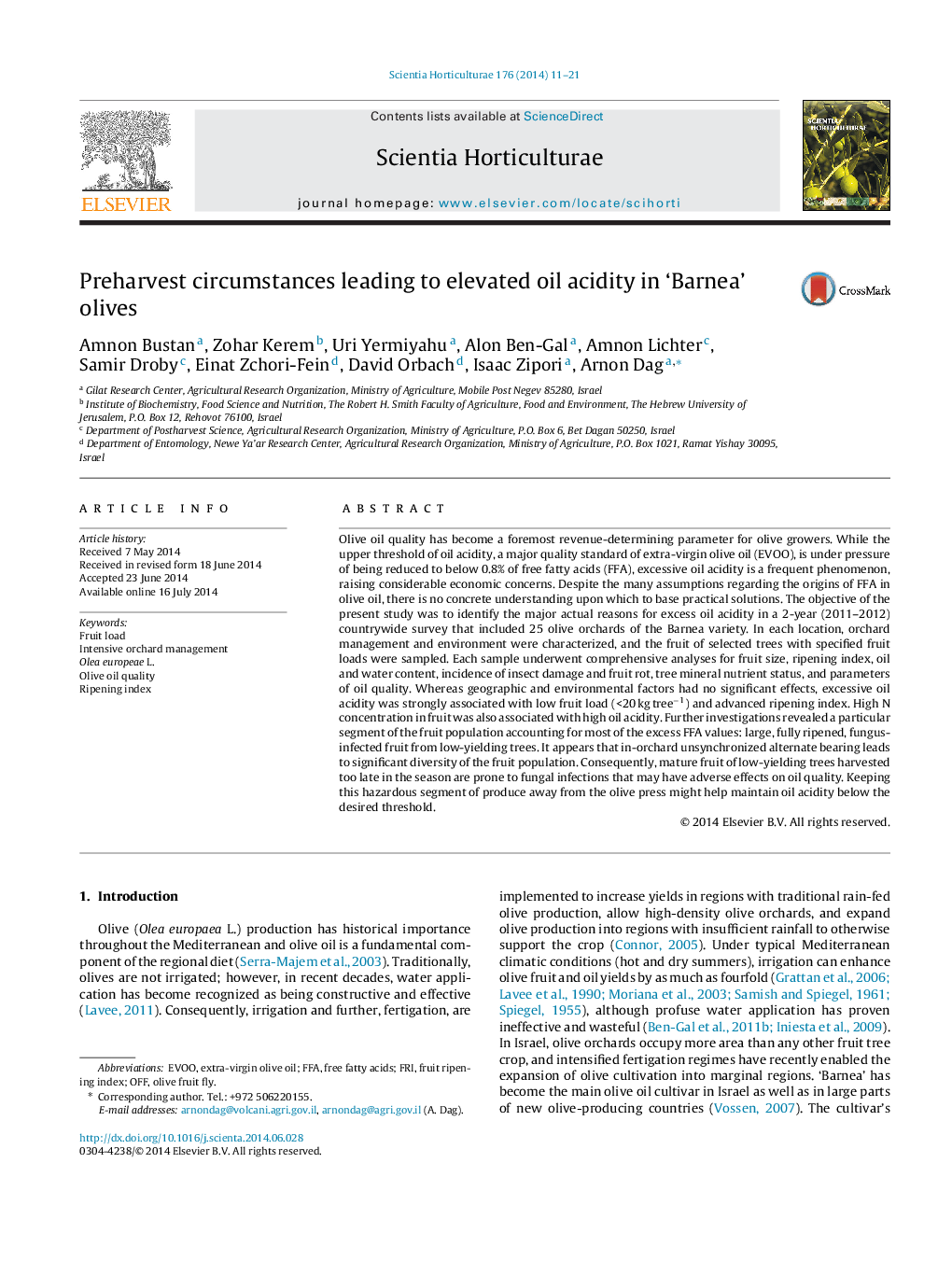| کد مقاله | کد نشریه | سال انتشار | مقاله انگلیسی | نسخه تمام متن |
|---|---|---|---|---|
| 4566731 | 1628822 | 2014 | 11 صفحه PDF | دانلود رایگان |

• A countrywide survey elucidated major reasons for high acidity in olive oil.
• Geographic and environmental factors had no significant effect on oil acidity.
• Low fruit yield (<20 kg tree−1) was firmly associated with high oil acidity.
• High oil acidity evolved particularly from fungus-infected, fully ripened fruit.
• Selective harvesting or fruit sorting may help meet EVOO standards.
Olive oil quality has become a foremost revenue-determining parameter for olive growers. While the upper threshold of oil acidity, a major quality standard of extra-virgin olive oil (EVOO), is under pressure of being reduced to below 0.8% of free fatty acids (FFA), excessive oil acidity is a frequent phenomenon, raising considerable economic concerns. Despite the many assumptions regarding the origins of FFA in olive oil, there is no concrete understanding upon which to base practical solutions. The objective of the present study was to identify the major actual reasons for excess oil acidity in a 2-year (2011–2012) countrywide survey that included 25 olive orchards of the Barnea variety. In each location, orchard management and environment were characterized, and the fruit of selected trees with specified fruit loads were sampled. Each sample underwent comprehensive analyses for fruit size, ripening index, oil and water content, incidence of insect damage and fruit rot, tree mineral nutrient status, and parameters of oil quality. Whereas geographic and environmental factors had no significant effects, excessive oil acidity was strongly associated with low fruit load (<20 kg tree−1) and advanced ripening index. High N concentration in fruit was also associated with high oil acidity. Further investigations revealed a particular segment of the fruit population accounting for most of the excess FFA values: large, fully ripened, fungus-infected fruit from low-yielding trees. It appears that in-orchard unsynchronized alternate bearing leads to significant diversity of the fruit population. Consequently, mature fruit of low-yielding trees harvested too late in the season are prone to fungal infections that may have adverse effects on oil quality. Keeping this hazardous segment of produce away from the olive press might help maintain oil acidity below the desired threshold.
Figure optionsDownload as PowerPoint slide
Journal: Scientia Horticulturae - Volume 176, 11 September 2014, Pages 11–21